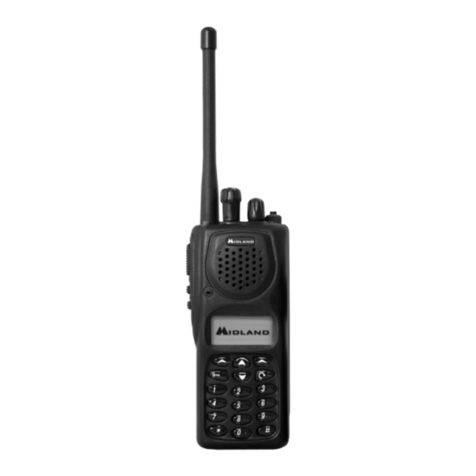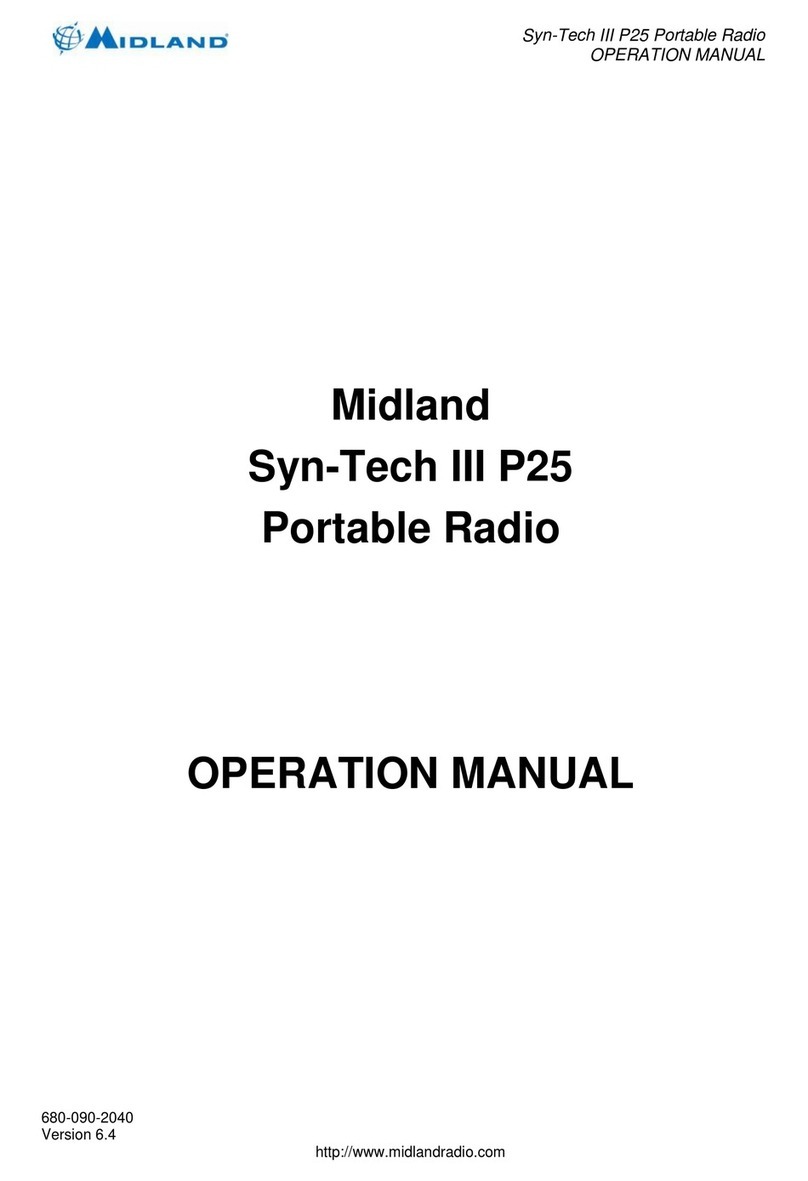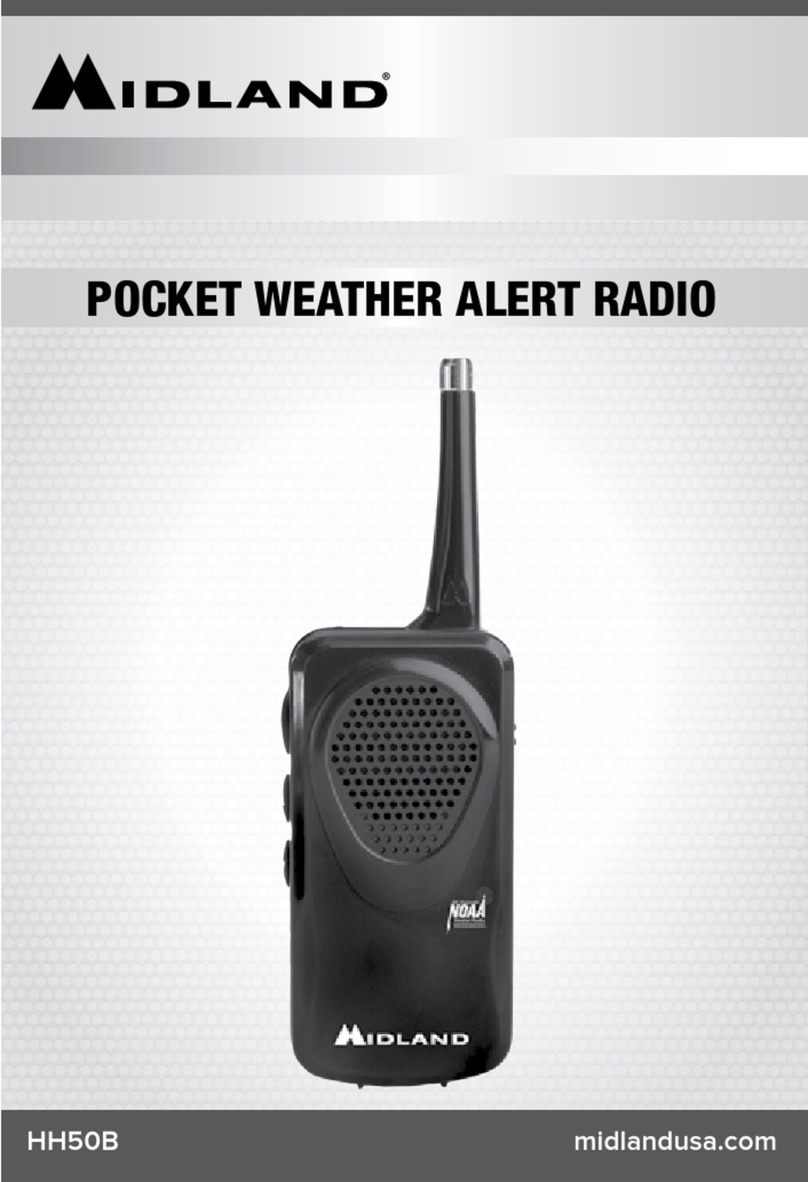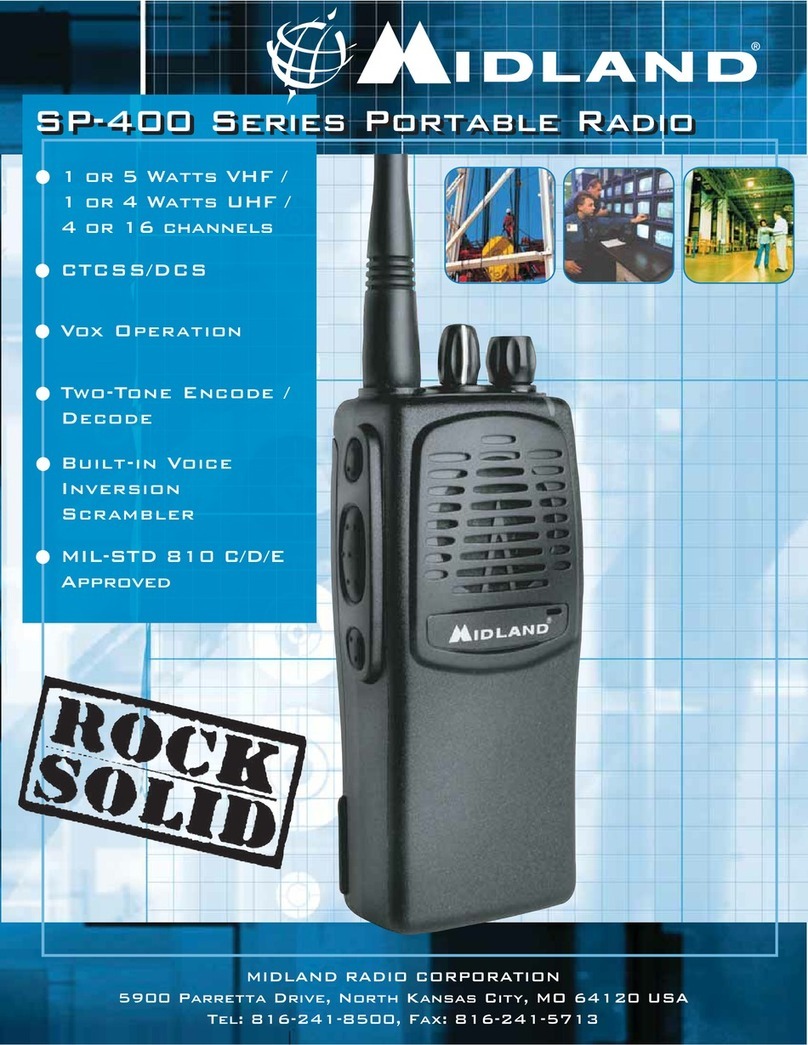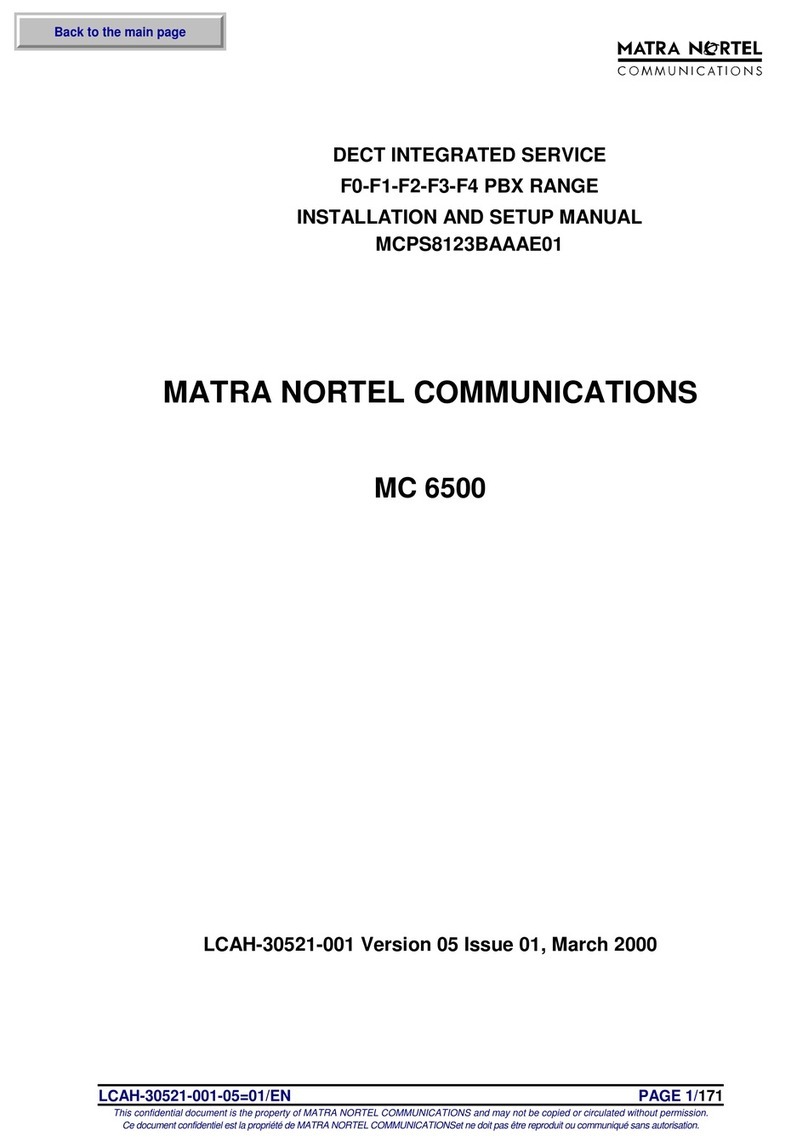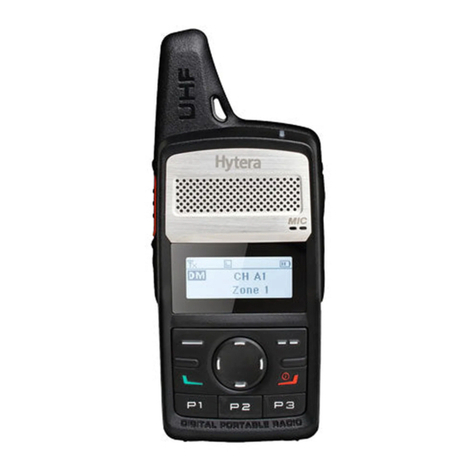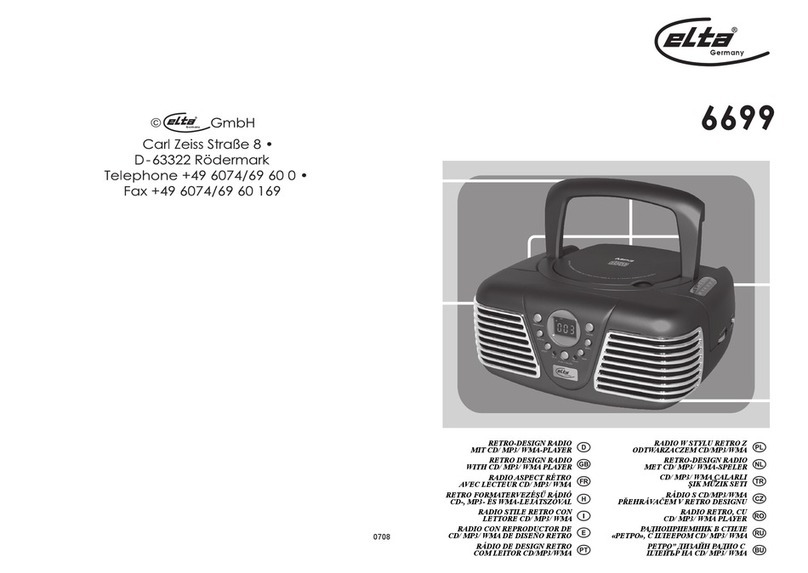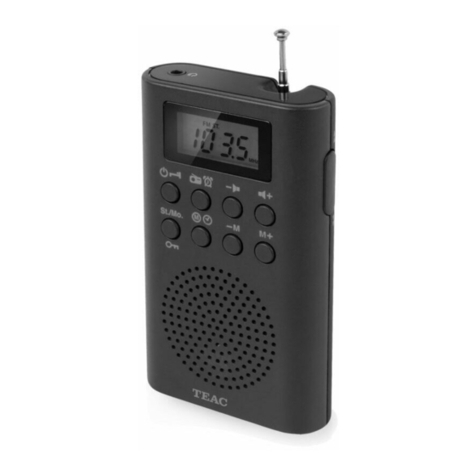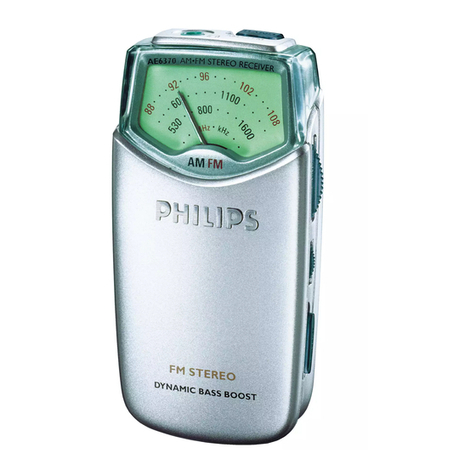
2
www.midlandradio.com
Version 5.1
680-090-2042
Introduction
We thank you for choosing the Midland P25 Base Tech III Base/Repeater Station to
meet your communication needs. Properly used, this product will give you many years
of reliable service. To get the most out of your purchase, be sure to carefully read this
manual before operating the radio.
The overall operation of this radio depends entirely on how it has been programmed. If it
is not functioning as desired, please check the programming first.
This manual covers up to firmware version 71BS241 and 71CPV012
If you should need Midland Technical Support, please call 1-816-462-0463 or
Other useful Midland numbers;
Main Line- 816-241-8500
Main Fax- 816-241-5713
LMR Sales- 816-462-0462
Credit Dept- 816-462-0464
Technical Support and Engineering Fax- 816-241-3272
Warranty Service- 816-462-0438
We welcome any comments on how we may improve our products to better server our
customers.
______________________________________________________________________________
WARNING: The antenna(s) used for this transmitter must be fixed-mounted on
outdoor permanent structures with a separation distance of at least 6 meters from all
persons during normal operation. The peak conducted output power at each antenna
terminal must not exceed 250 Watts and the peak radiated output power must not
exceed 1000 Watts EIPR. Users and installers must ensure that FCC requirements for
satisfying RF exposure compliance are met. (See FCC Rules Part 1, Sections 1307 and
1310)
NOTICE: The AMBE+2 ™ voice coding Technology embodied in this product is
protected by intellectual property rights including patent rights, copyrights and trade
secrets of Digital Voice Systems, Inc. This voice coding Technology is licensed solely
for use within this Communications Equipment. The user of this Technology is explicitly
prohibited from attempting to extract, remove, decompile, reverse engineer or
disassemble the Object Code, or in any other way convert the Object Code into a
human readable form. U.S. Patents Nos. #5,870,405, #5,826,222, #5,754,974
#5,701,390, #5,715,365, #5,649,050, #5,630,011, #5,581,656, #5,517,511, #5,491,772,
#5,247,579, #5,226,084 and #5,195,166.


